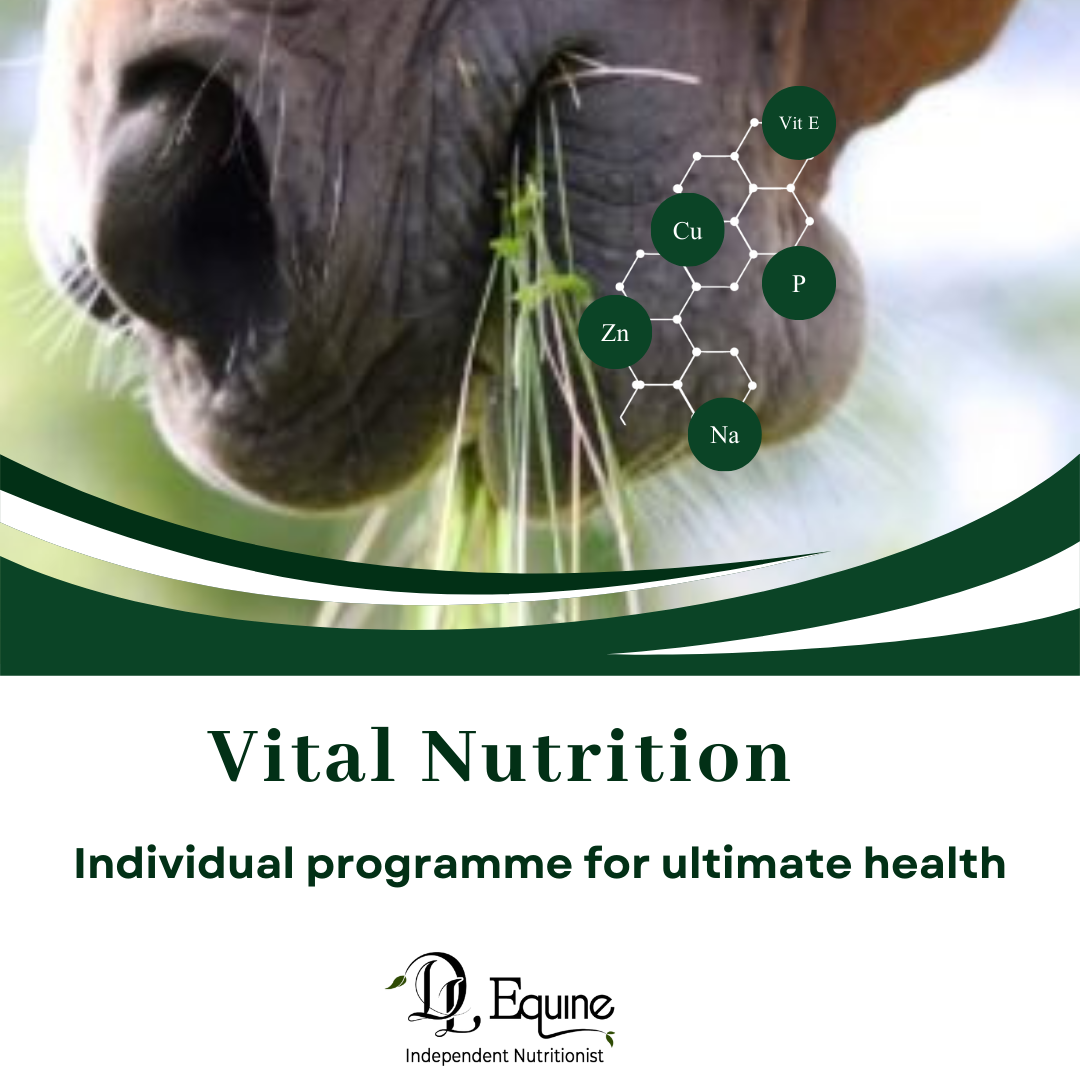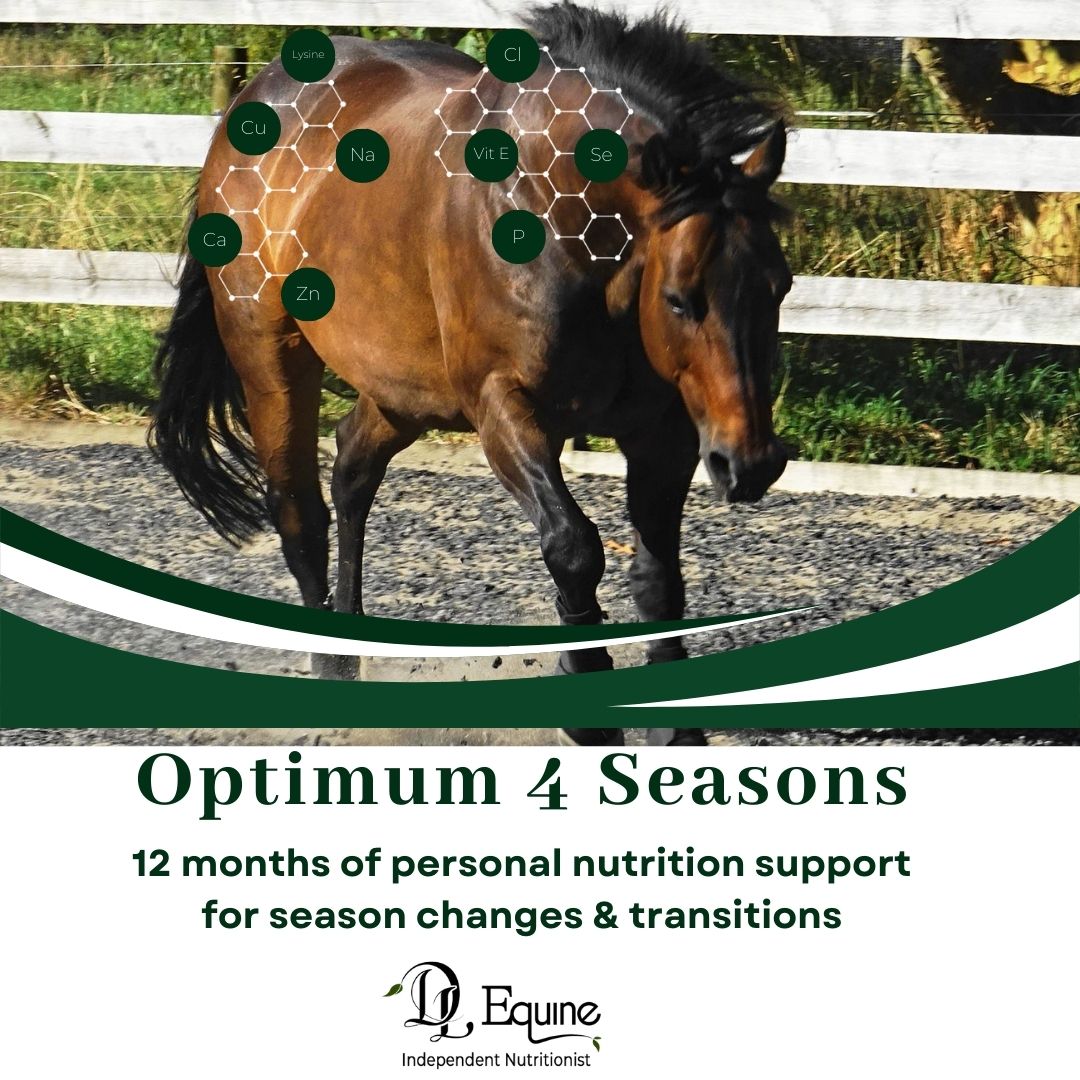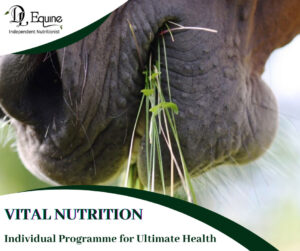This is one of the absolute best times of year to get a pasture analysis done so that I can calculate extremely accurately from your horse is ingesting and formulate a great nutrition programme!
If you are a client wondering what to get on an analysis give me a shout.
But if have ever got a report and are scratching your head to what it all means?
In terms of the definitions here is quick run down for you to help understand it:
Minerals
From the minor to the major minerals, the report will tell you exactly what your horse is eating in every mouthful.
DM
• Dry matter, this is the actual fibre content of your grass.
• We want a lot of dry matter to be eaten by the horse as this has many roles to play in digestion. A horse needs to eat 1.5% – 2% of its body weight per day in dry matter.
• It keep the gut moving digesta thru the system,
• It keeps saliva flowing when the horse is chewing, this coats the stomach and helps prevent acid splash causing ulceration. Saliva also helps keep the digesta moving thru the system.
• Fibre reaches the hindgut and the microbes break it down and make volatile fatty acids from it = energy for the horse.
• The more fibre the better health and numbers of microbes and the healthier the horse.
• This is why we need to add more fibre as in hay etc.
Crude Protein
• This is an indirect or ‘crude’ estimation of that patures protein content based on the amount of nitrogen.
• Crude Protein contains the amino acids content of the grass, however the anlaysis cannot tell us the acutal amount of the amino acids, which is what the horse actually needs.
• Dietary protein supplying amino acids is a necessary component of the horse’s diet.
• Proteins are required for a multitude of key bodily functions.
• These include major components of muscle, enzymes, hormonal roles, the immune system, and transport of nutrients across membranes and in blood.
• Protein assists in tissue repair and growth, hence the amount of protein required in growing, pregnant, lactating or heavy exercising horses is increased.
• Your horses protein requirement will be met by the grass and feeding other hay and chaffs.
ADF = Acid Detergent Fibre
• lignin and cellulose.
• Gives a measure of two of the carbohydrates that make up the plant cell wall –
• Cellulose is broken down by micro-organisms in the hind gut but lignin is virtually undigestible. The lower the number, the more digestible the fiber.
NDF = Neutral Detergent Fibre
• Includes lignin and cellulose but also hemicellulose, (another cell wall component.)
• The NDF value is generally a measure of intake potential or an indirect measure of potential palatability.
The lower the ADF and NDF, again the more digestible the fiber will be and the greater the intake potential will likely be.
DE = Digestible Energy
• Refers to the amount of energy in the diet that is absorbed by the horse.
• Digestible energy requirements are calculated based on the horse’s maintenance DE requirement plus the additional energy expended during exercise.
• Made up from energy sources: starch, fat, protein, and fiber.
• This is the calories your horse needs to fuel its body.
• To assess whether you need to decrease the amount of energy in the diet you should monitor body condition score closely.
• The DE of the whole diet will be comprised of pasture, hay, chaff and feeds
NSC = Non-Structural Carbohydrate
A measure of the easily digestible carbohydrates, including simple sugars and fructans.
• Non-Structural Carbohydrate is calculated as Starch + WSC. (water soluble carbohydrate)
• These move from the stomach to the hindgut and can overload the microbes in the hind gut, which causes a rise in acid in the hind gut – which in turn can kill off many of the good microbes. This can lead to laminitis and hind gut acidosis.
• If horse prone to the following conditions: Grain Intolerance,Laminitis. A horse should have a diet where all individual ingredients (forages, feeds, supplements) are less than 12% NSC.
• In severe cases you may need to restrict this to less than 10% NSC.
WSC = Water-soluble carbohydrates
A measure of water-soluble sugars, including simple sugars and fructans.
These are the real porblem if in high levels when it comes to EMS, or PPID or laminitis prone horses (not Fructans).
Nitrate-N
• In the large intestine of the horse, only about 25% of nitrate is converted to nitrite.
• Nitrite is absorbed into the blood, where it damages hemoglobin, the iron pigment in red blood cells that allows them to carry oxygen, and converts it to methemoglobin, which cannot carry oxygen.
• Levels below 1000mg/kg are generally safe to feed
If the NSC (sugar levels) of your grass are a little high and the hay is also high we need to restrict the grass and soak the hay to leach out the sugar.
And balance the mineral requirements with a programme formulated by an equine nutritionist 🙂
Happy Feeding, see you soon!






